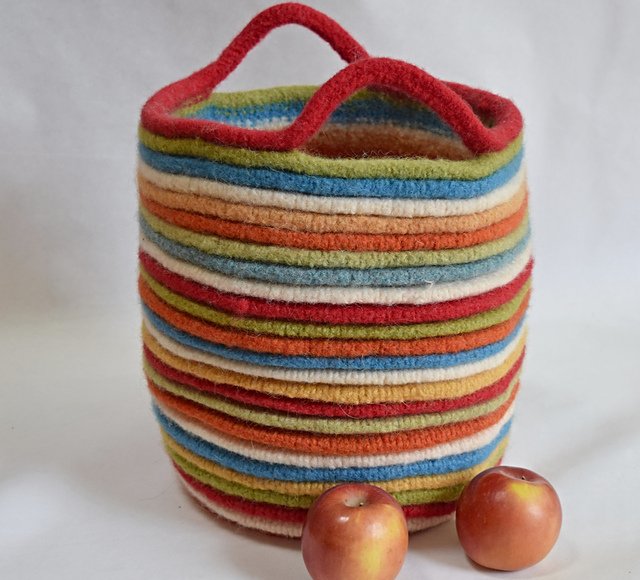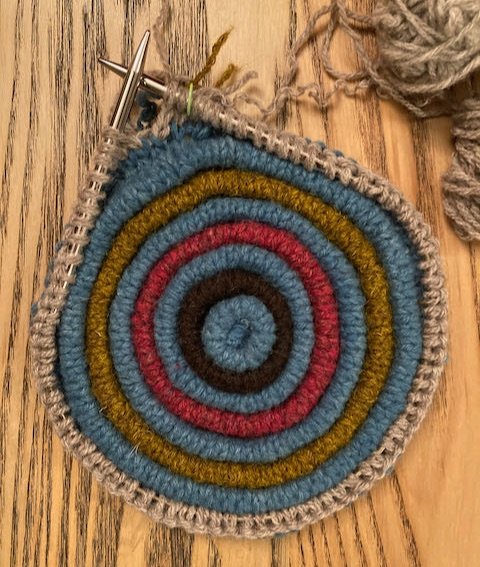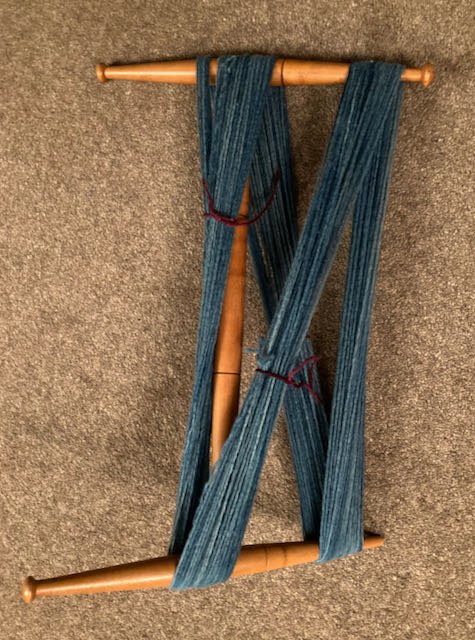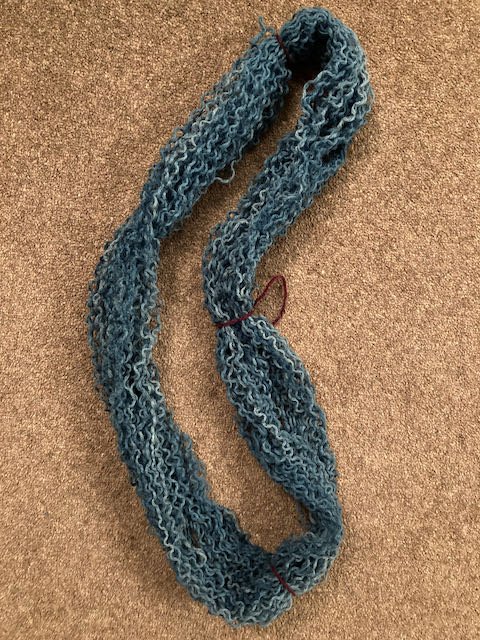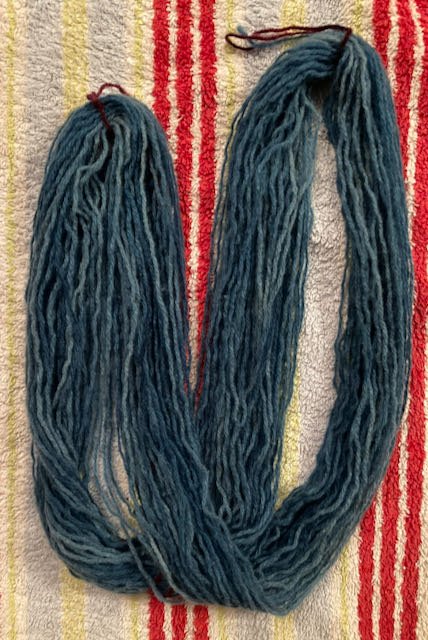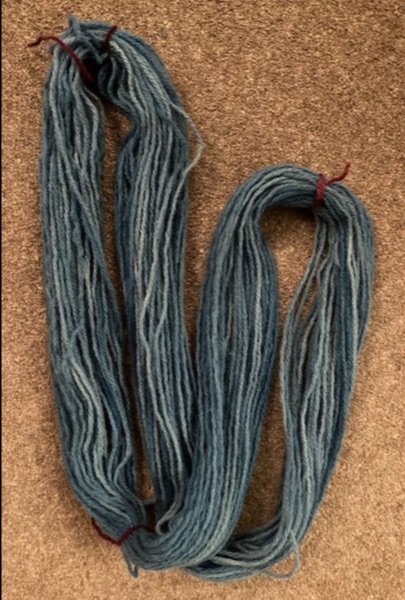Getting the wrinkles out of re-purposed yarn
As a retailer I'm a little ambivalent about the whole 'No-Spend January' thing but I do believe in trying to make the most of what is already available to me. I have been (slowly) making a Ribbed Basket from scraps in my stash plus the yarn from a much loved but very scruffy indigo dyed sweater that I have ripped back.
As my sweater was wet blocked at the time of making, and has been washed several times since, the ripped-back yarn was seriously kinked once unravelled. Knitting with yarn in this condition can result in an uneven fabric and difficulty getting gauge. Whilst evenness and gauge hardly matter for a project like this, which will be felted when it is finished, yarn in this condition is not fun to work with. In case anyone is wondering how best to un-kink re-purposed yarn, here is what I did with it.
I started by winding my yarn into a skein. I have an old Niddy-Noddy at home which is perfect for the job but you could also use a chair back or a willing companion to hold it for you.
Loosely tie the finished skein in three places with bits of contrasting yarn to stop it falling apart, then soak it in lukewarm or cold water for an hour. I usually add a no-rinse detergent, such as Eucalan, but it's not essential. Don't rush this stage as wool is naturally water-repellant and it takes time to get it saturated.
Wool fibres have a kind of memory. This property of their physical and chemical make up enables a wool yarn to regain its original shape in a way that a non-wool yarn just can't compete with. All that is required to activate this memory is the addition of water.
After your skein has soaked for about an hour, catch hold of one of the ties and lift it out, give it a gentle squeeze and roll it in a towel to get out the excess moisture. By this point (above left), it should already be looking much better. Hang the skein up to dry over a coat hanger wherever it can drip without causing problems. Gravity is helpful here so don't dry it flat.
Once dried (above right), your yarn will be almost back to its pre-knitted condition and certainly be much smoother and pleasanter to work with. Not to mention the glow of satisfaction you will feel from successful recycling!

